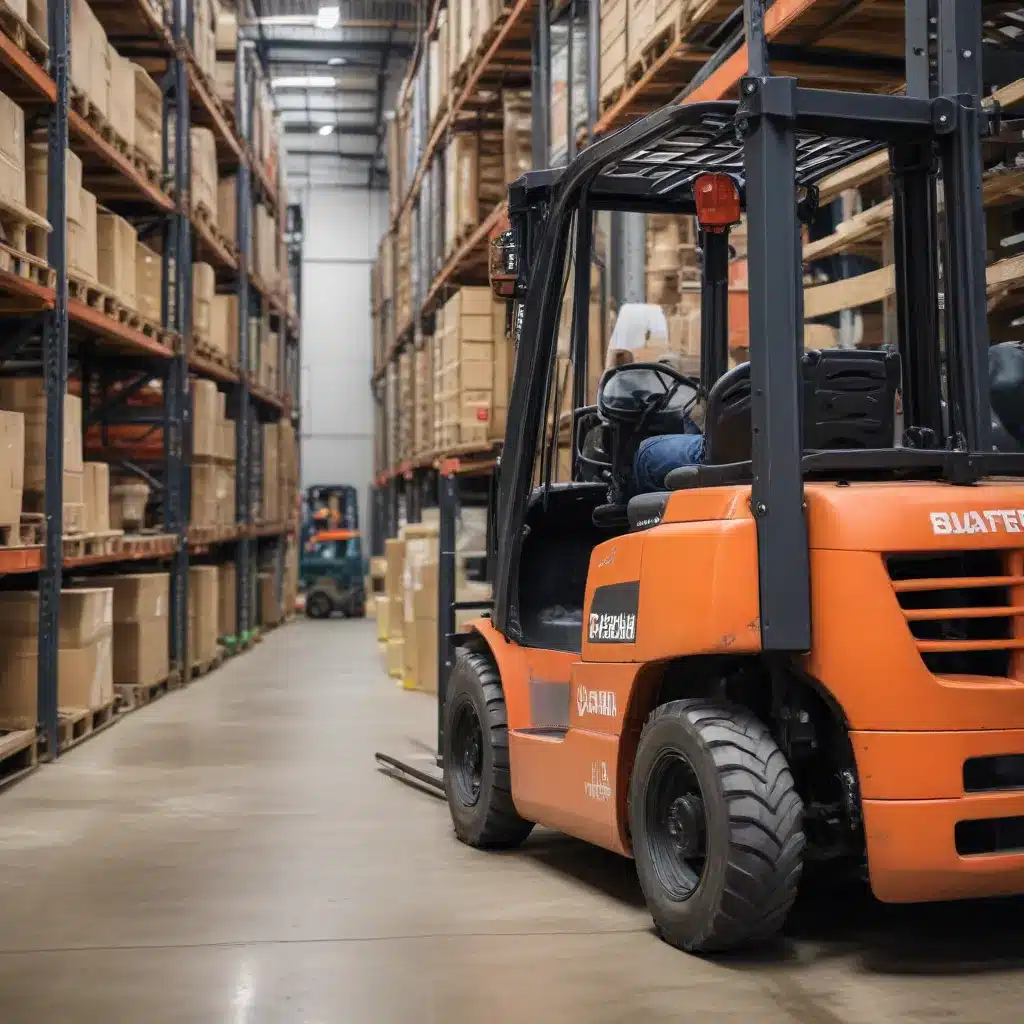
The Evolving Landscape of Forklift Operations and Sustainability
The world of forklifts and warehousing is undergoing a transformative shift, driven by the increasing emphasis on sustainability and environmental responsibility. As businesses strive to align their operations with ambitious corporate sustainability goals, the role of forklift maintenance has become a critical component in the journey towards a more eco-friendly future.
Historically, the forklift industry has been perceived as a significant contributor to carbon emissions, energy consumption, and waste generation. However, technological advancements, coupled with a heightened awareness of the environmental impact, have catalyzed a fundamental change in the way forklift operations are managed.
Embracing Industry 4.0 and Prescriptive Maintenance
The advent of Industry 4.0, or the Fourth Industrial Revolution, has ushered in a new era of digitalization, data-driven decision-making, and advanced maintenance strategies. One such approach that has gained significant traction is prescriptive maintenance, which leverages the power of data analytics, machine learning, and predictive modeling to optimize forklift performance and longevity.
Prescriptive maintenance goes beyond traditional reactive or preventive maintenance practices, providing actionable insights to forklift operators and maintenance teams. By continuously monitoring forklift performance, usage patterns, and environmental conditions, prescriptive maintenance algorithms can accurately predict potential failures, recommend proactive maintenance actions, and identify opportunities for energy and resource optimization.
Aligning Forklift Maintenance with Sustainability Goals
As organizations strive to meet their sustainability commitments, the alignment between forklift maintenance and corporate environmental, social, and governance (ESG) goals has become increasingly crucial. Here are some key areas where forklift maintenance can contribute to the realization of sustainability objectives:
1. Energy Efficiency and Emissions Reduction
Through the implementation of prescriptive maintenance strategies, forklift operators can optimize energy consumption, reduce fuel usage, and minimize emissions. By proactively identifying and addressing issues that impact energy efficiency, such as battery degradation, tire wear, or engine performance, businesses can significantly lower their carbon footprint and align with decarbonization targets.
2. Resource Conservation and Waste Minimization
Effective forklift maintenance not only extends the lifespan of these essential assets but also reduces the need for premature replacement or excessive spare parts consumption. By minimizing waste, optimizing material usage, and promoting the reuse and recycling of forklift components, maintenance practices can directly contribute to the circular economy and the achievement of zero-waste objectives.
3. Occupational Health and Safety
Forklift maintenance plays a crucial role in maintaining a safe work environment for operators and warehouse personnel. Proactive maintenance, coupled with advanced safety features and driver training, can significantly reduce the risk of accidents, injuries, and potential legal liabilities. This alignment with occupational health and safety standards supports the social component of corporate sustainability goals.
4. Supply Chain Resilience and Efficiency
Reliable and well-maintained forklift fleets are essential for ensuring the smooth operation of warehousing and logistics networks. By optimizing forklift performance, businesses can enhance supply chain resilience, minimize disruptions, and improve overall operational efficiency. This, in turn, contributes to the economic sustainability of the organization and its stakeholders.
The Holistic Approach to Forklift Maintenance and Sustainability
To fully realize the benefits of aligning forklift maintenance with corporate sustainability goals, a holistic approach is required. This entails the integration of advanced technologies, data-driven insights, and collaborative partnerships across the value chain.
Harnessing the Power of Data and Analytics
The adoption of IoT-enabled forklift monitoring systems, digital twins, and predictive analytics can provide a wealth of data-driven insights to guide maintenance strategies. By leveraging these technologies, organizations can optimize energy consumption, minimize emissions, and extend the lifespan of their forklift fleets, all while aligning with their sustainability commitments.
Fostering Collaborative Partnerships
Forklift manufacturers, maintenance providers, and sustainability experts must work together to develop innovative solutions that seamlessly integrate forklift operations with broader corporate sustainability initiatives. Through collaborative efforts, businesses can access the latest technologies, best practices, and industry expertise to drive meaningful progress towards their sustainability goals.
Embedding Sustainability in Organizational Culture
Sustainable forklift maintenance practices must be embraced and championed at all levels of the organization, from the C-suite to the frontline operators. By fostering a culture of environmental stewardship, safety, and continuous improvement, businesses can empower their employees to actively contribute to the achievement of sustainability objectives.
The Path Forward: Embracing the Sustainable Forklift Future
As the world continues to grapple with the pressing challenges of climate change, resource depletion, and social inequities, the forklift industry has a unique opportunity to lead the way in driving sustainable transformation. By aligning forklift maintenance strategies with corporate sustainability goals, businesses can not only reduce their environmental impact but also enhance their operational efficiency, strengthen their competitive edge, and contribute to a more resilient and equitable future.
The journey towards a sustainable forklift future is not without its challenges, but the rewards are far-reaching. By embracing the power of data, technology, and collaborative partnerships, the forklift industry can pave the way for a greener, more resource-efficient, and socially responsible warehousing and logistics ecosystem. Ultimately, the success of this transformation will hinge on the industry’s ability to adapt, innovate, and inspire others to join the pursuit of a more sustainable tomorrow.
Conclusion
Forklift maintenance has emerged as a critical leverage point in the pursuit of corporate sustainability goals. By integrating advanced maintenance strategies, data-driven insights, and collaborative partnerships, businesses can unlock a future where forklift operations seamlessly align with environmental, social, and economic imperatives. This holistic approach not only benefits the organization but also contributes to the greater good, positioning the forklift industry as a beacon of sustainable transformation. As the industry continues to evolve, the opportunities to drive positive change have never been more promising.

